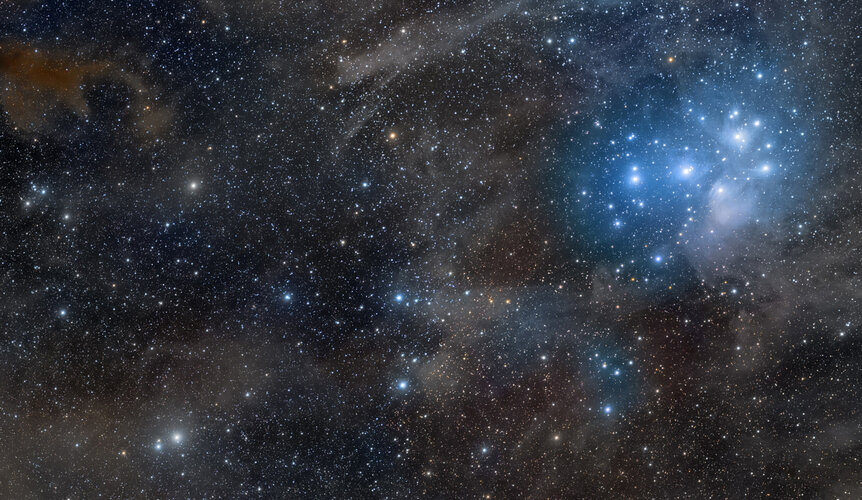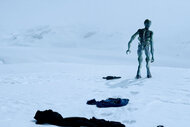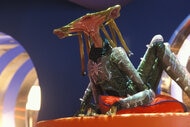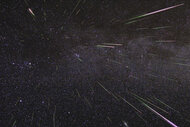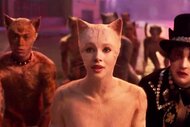Create a free profile to get unlimited access to exclusive videos, sweepstakes, and more!
Two comets and the Seven Sisters
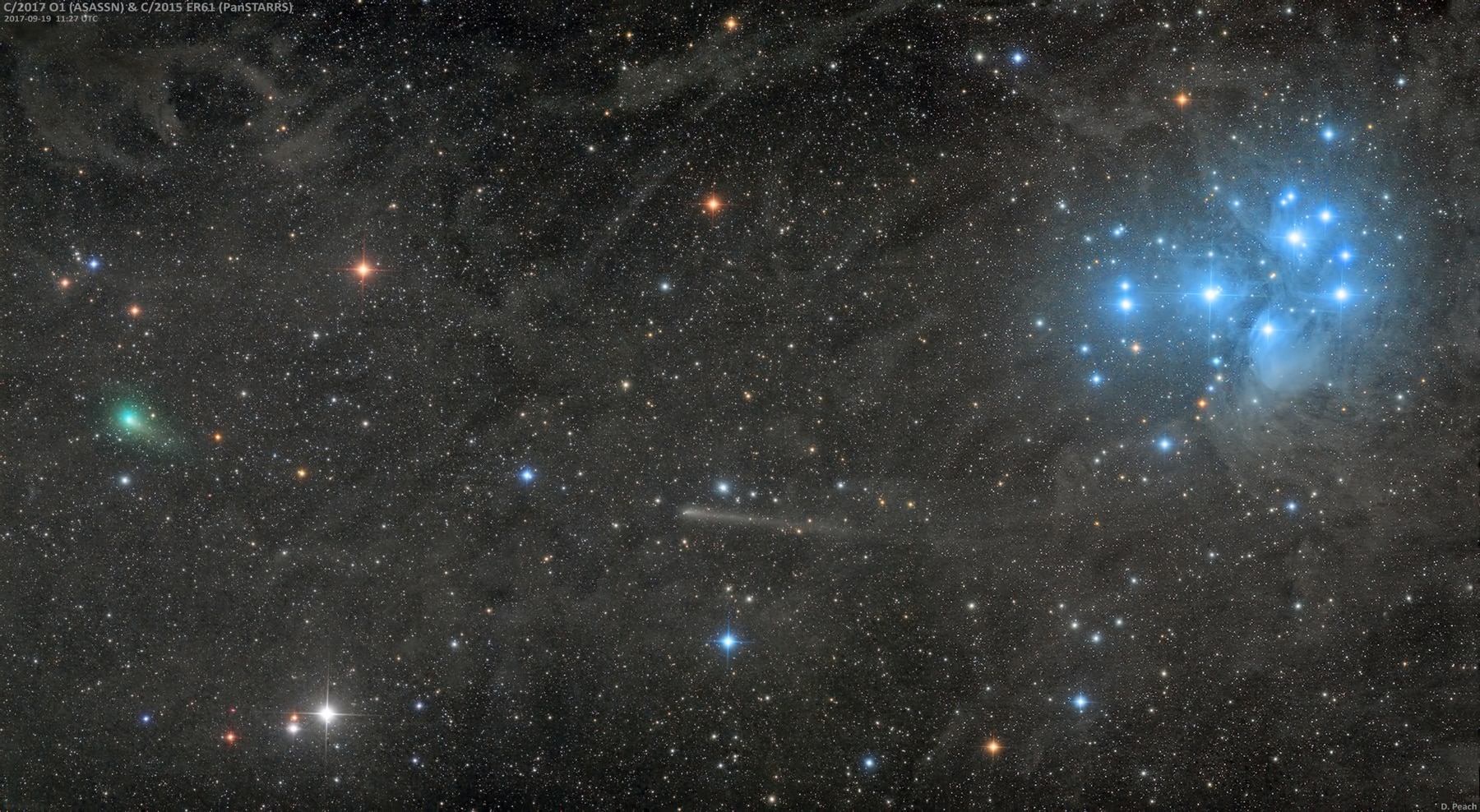
Damian Peach is a wonder. His images of the sky are always amazing; he’s one of the best astrophotographers I’ve seen. His specialty is planets, but sometimes he broadens his horizons — a layered metaphor in this case — and takes deep sky images.
He’s posted lots of comet photos over the past few years, but a new one he just released is next-step stuff. This is astonishing:
Whoooaaaa.
This shows not just one comet, but two: On the left, glowing ghostly green, is C/2017 O1 (ASASSN), and in the lower center is C/2015 ER61 (Pan-STARRS). He caught them on September 19, 2017, as they were passing near the wonderful Pleiades star cluster, also called the Seven Sisters (in Japanese, this is called Subaru; the next time you see one of those cars take a closer look at their emblem).
Both of these comets are noteworthy. C/2017 O1 was discovered in July 2017 via the All-Sky Automated Survey for Supernovae (ASASSN), a robotic telescope that scans the sky looking for “transient objects,” things that get bright and fade again (like exploding stars). It also catches things that move, and found the comet when it was still 260 million kilometers from Earth. The comet never gets closer to the Sun than the orbit of Mars, and its orbit is very elliptical; over the next 5000 years or so it’ll put 130 billion more kilometers between it and the Sun!
It’s glowing green due to the presence of diatomic carbon: two carbon atoms bound together. This isn’t too unusual in comets, but it’s striking nevertheless. There aren’t too many green objects in the sky — stars can’t be green!
The other comet, C/2015 ER61, was found by the Panoramic Survey Telescope and Rapid Response System (Pan-STARRS) in March 2015, when it was well over a billion kilometers from Earth, about the same distance from the Sun as Saturn. It too has a highly elliptical orbit, and it’s even roughly the same size as O1’s. But ER61 has had something of a different path in life, literally: In March 2016 it passed relatively close to Jupiter, and the mighty planet’s gravity changed the comet’s orbit. The point in its orbit farthest from the Sun shifted, dropping toward the Sun, shrinking the overall size of the orbit.
Jupiter does this to comets fairly often, so much so that an entire group of comets is called the Jupiter family comets. As these comets slowly disintegrate due to sunlight they spread dust around the plane of the solar system, and you can see sunlight faintly reflected off that dust if you’re at a very dark location. It’s called zodiacal light, and it’s still on my list of things I really want to glimpse for myself someday.
The Pleiades provide a nice point of focus for Peach’s image. They are a small cluster of stars a mere 400 or so light-years away. The stars are young, only a hundred million years old, and are a prominent landmark (skymark?) in the winter sky, near Taurus and Orion. Their shape looks enough like a dipper to fool people into thinking they’re the Little Dipper, too.
But what about all that fuzzy cloudy stuff in the background? What’s that?
Well, it’s fuzzy cloudy stuff. Really! That’s called high galactic latitude cirrus, or sometimes integrated flux nebula. The first term means it’s wispy, dusty material located high above the plane of our flat disk-shaped galaxy, and the second means it doesn’t glow on its own, but instead reflects the collected light of stars around it! That means it’s faint. It’s very difficult to capture, and wasn’t well known before digital photography. Now it appears in many deep images.
In fact, another brilliant astrophotographer, Rogelio Bernal Andreo, captured it in a photo of the Pleiades he took a few years ago:
I rotated the image to match the orientation of Peach’s. It’s interesting to compare the two; the dust is similar but there are some differences. Mind you, the dust hasn’t changed! It’s hundreds of billions of kilometers across; it would take centuries to notice any difference. I think it's more likely that, because it’s so faint, the way the photos are processed can change what you see very easily. Just a small tweak in contrast, or background, or filter choice, can make the nebula appear and disappear. It goes to show you that you can’t always trust that, in an astrophoto, what you see is what you get.
Except, of course, that what you see in this image is gorgeousness. That is most definitely what you get here.
P.S. In honor of the work he's done to bring the beauty of the heavens to Earth, Peach has just had an asteroid named after him! It's a main belt asteroid about 2-3 kilometers across with a mildly eccentric orbit, and was originally discovered in 2001. Congratulations, Damian!

